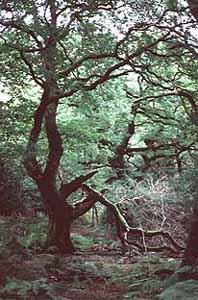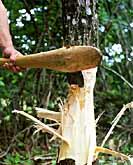- Home
- Discover the megaliths of Morbihan
- The Neolithic period
- Fauna and flora
At the height of the last Ice Age, the plant landscape was similar to the tundra we know today, with no trees other than in a few rare sheltered areas.
When postglacial warming began to take effect, the tree cover spread northwards from southern Europe and from those refuge areas. A "vanguard" forest of pine and birch emerged and mixed oak woodland combining our most common deciduous tree species soon began to develop.
The forest started to spread throughout middle Europe, except in the uplands and flood valleys (natural meadows) and in exposed coastal areas (on some shores, the forest even grew "right up to the shore line", as can still be seen in some places).
However, the primary forest was very different from the woodlands which have been managed and forested since the Middle-Ages. Only a few well preserved woodlands of Central Europe or Great-Britain convey some impression of the early forest and of its tree species.
Tundra landscape, Hudson Bay (Quebec, Canada).
- palynology,
- dendrology,
- pedology.
An aspect of temperate primary forest (New Forest, southern England).
Experimental felling of a willow with a polished stone ax.



